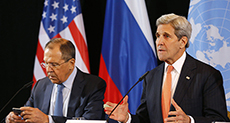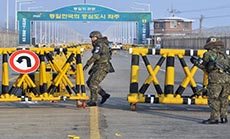DIARY OF RESISTANCE OPERATIONS -- MAY 1997

Islamic Resistance Performs 86 Operations in May, 1997
This May, the Islamic Resistance increased the number of military operations against the Zionist-Lahd forces, performing 86 ones.
Four other military operations were performed by the different resistance squadrons.
Two Zionist soldiers and two officers were killed, and nine others were wounded, the enemy acknowledged.
In fact, the frustration and confusion masking the Zionist military made a soldier shoot another and wound him.
Eleven Lahd militiamen were wounded, too.
The Islamic-Resistance sources confirmed the death of seven "Israeli" soldiers and the wounding of nine others, in addition to the death of a Lahd militiaman and the injury of eleven others.
On the other hand, six Islamic-Resistance fighters were martyred: Muhammad Haidar el-Jouhari, Hussein Bahij Nasser, Asaad Shabshoul, Ahmad Muhammad el-Moussawi, Mahdi Hassan Shamas, and Ahmad Bashir el-Mokh.
Performing a self-sacrifice operation against a maritime router, the Amal-Movement fighter Hisham Fahs was martyred, too.
Islamic Resistance Breaks Into Sojod Site, May 12, 1997
While "Israel" celebrated "the anniversary" of the establishment of the Zionist enemy, the Islamic-Resistance fighters performed a daring operation against the occupation forces and their Lahd agents. The fighters actually broke into Sojod Site, killed or wounded each of its garrison soldiers, dominated it, and posted the standards of Hizbullah and the Islamic Resistance onto the site mounds and fortifications.
"Al-Manar Television" displayed a videotape on the operation developments: Sojod Site is 1030 meters high above the sea level, and it corresponds to "Battalion 10" of "the West Brigade" of the Lahd Militia. There is only one entrance to the site, and the height of the surrounding ramparts ranges between 12 m and 15 m. As well, the site is surrounded by land mines and three layers of wired fence.
Sojod Site actually overlooks most of the towns of Iqlim at-Toffah (Literally: "The Apple Region"), and it has continuously been used by the Zionists and their Lahd militiamen to shell towns and civilians.
In a statement, the Islamic Resistance confirmed two of its groups progressed to the site from two different sides. Before dominating the site, the fighters warned four Lahd militiamen they would die if they did not surrender. But the militiamen refused, and the fighters gunned them down by the mounds.
The fighters killed two other militiamen by another mound, and they demolished a half-track and two Jeeps while breaking into the site.
A Zionist military spokesman acknowledged the operation, pointing out an "Israeli" soldier had been killed and four Lahd militiamen wounded. Then the Lahd Militia's channel confirmed the news.
Upon the statement of Lahd-Militia sources, the international news agencies reported that the Resistance fighters had reached the site ramparts and posted the Resistance's standards onto them. The news agencies as well said the wounded soldiers had been seriously wounded and transported to Ram Bam Hospital in Haifa.
Trying to conceal the consequences of the operation, the Deputy Chief of Staff Eely Ametai claimed the fighters had been unable to break into Sojod Site, that four of them had been martyred, and that they had afterwards tried to post their standards onto a hill near the site.
One of Hizbullah's media sources, however, said the videotape "al-Manar Television" was going to display would refute Ametai's claims.
The first part of the videotape showed only the beginning of the operation: The fighters were still outside the site. This made the enemy continue telling lies.
On the second day, "al-Manar Television" displayed the second part of the videotape: The fighters had now broken into the site, demolished its inner fortifications, and posted the Islamic Resistance's standard onto a mound. A fighter appeared saluting the standard, too.
The same source denied the enemy's claim as to four fighters' martyrdom. The source denied some reporters' "reports" on the operation and their claims as to having seen the fighters' "corpses". The source confirmed the Islamic Resistance would always be very proud of its martyrs, declaring the martyrdom of the first fighter to break into the site, Hussein Bahij Nasser.
Certain security sources declared, "An "Israeli" officer in charge of Sojod Site's Lahd garrison was wounded in the operation. The "Israeli" forces had begun assigning the responsibility of the Lahd sites to "Israeli" officers so as to prevent the Lahd militiamen serving there from escaping.
The "Israeli" officer was actually shot while trying to escape from the site along with several Lahd militiamen.
The Zionist intelligence investigated the operation circumstances, interrogating three Lahd militiamen who had survived the Resistance's bullets.
Bir ad-Dhahr Confrontations, May 15, 1997
On May 15, 1997, a Zionist commando force of "the Paratroopers Brigade" attempted to progress to Bir ad-Dhahr Heights in West Beqaa. A part of the force lurked at Kawkaba Site and another in al-Hasbani.
While trying to get positioned on ad-Deidabeh Hill (known as martyr Muhammad Bjeiji's hill), the forty commandoes were ambushed by the Islamic-Resistance fighters. Not far from the enemy force, the fighters opened the fire of their firearms and artillery and violently clashed with the force for three hours. "Israeli" helicopters landed in the combat zone more than once to evacuate the casualties.
Two "Israeli" commandoes and the officer in charge of the commandoes were killed, and seven "Israeli" commandoes were wounded. Also, a Lahd militiaman was wounded while the Resistance shelled Kawkaba Site, the enemy acknowledged.
On the other hand, two Islamic-Resistance fighters were martyred.
"The Northern Command" investigated the clashes in order to figure out the reasons beyond the serious casualties, said the enemy's channel.
Concurrently with the clashes, the Lebanese Army launched missiles against the "Israeli" helicopters to prevent them from evacuating the casualties, the investigation revealed.
Hereupon, "the Northern Command" Chief Amiram Levin threatened that any side sharing any of Hizbullah's battles, obstructing the "Israeli" military's operations, or threatening the military was going to be "stricken".
Making late acknowledgements as to the real casualties, the enemy's channel declared, "Hizbullah's mortars killed an "Israeli" officer in the south of Lebanon."
The Resistance fighters shelled "Israeli" sites, attacked an "Israeli" force drilling in "the Middle Sector", and wounded the "Israeli" officer, who died shortly afterwards, the military correspondent of "Channel 1" reported.
In July, special information sources of the occupied region reported, "On the 15th of last May, the Islamic Resistance foiled an "Israeli" force's mission to install its developed radar which could monitor individuals. An "Israeli" engineering team was installing the radar on Bir ad-Dhahr Heights, north of the Zionist Kawkaba Site, 8 km away from the occupied region."
Besides, the information stated, "The enemy decided to install the radar after the Resistance fighters had escalated their attacks against the Zionist-Lahd sites along Hasbaya frontier. Ad-Dhahr Heights were chosen since they overlooked the occupation forces' sites and the supply routes located in Marjeeyoun."
Between the 1st and the 15th of March, an "Israeli" engineering team thrice surveyed ad-Dhahr Heights and carried out airdrops. The team's purpose was determining the right location for the radar on a rough mountain cliff overlooking ad-Dhahr Heights and several regions of West Beqaa and Hasbaya.
The information pointed out the electronic radar, camouflaged exactly like the mountain cliff, covered an approximately five-kilometer range and could monitor all moves in the region and transmit the information to the occupation command.
At night on the 15th of May, three "Israeli" helicopters carried the "Israeli" engineering team along with a protection force and the radar to its place on Bir ad-Dhahr Heights. While the front of the "Israeli" force was getting deployed, it was stunned by an ambush set by the Islamic-Resistance fighters.
Only a few meters away from the force, the fighters killed three soldiers and wounded seven others.
Two fighters were martyred in the clashes foiling the "Israeli" plan.
Machine-gunning the helicopters with a barrage, also shelling the landing spot of a helicopter made it difficult for the enemy force to evacuate the wounded soldiers. Thus, the force had to retreat, leaving the radar without installation.
Consequently, the occupation command sent air forces to demolish the radar. For three days, the "Israeli" war planes carried out over twenty airstrikes, and they demolished all rocks resembling the radar that could not be identified.
Six Islamic-Resistance Fighters Martyred in May, 1997
The Islamic Resistance proudly announced the martyrdom of these fighters:
Muhammad Haidar el-Jouhari: martyred on May 6, 1997 in al-Kantara Valley
Hussein Bahij Nasser: martyred May 12, 1997 while breaking into Sojod Site
Asaad Shabshoul: martyred on May 14, 1997 while confronting the garrison of ad-Dabsheh Site
Ahmad Muhammad el-Moussawi: martyred on May 15, 1997 while confronting the enemy forces in ad-Dahr Heights
Mahdi Hassan Shamas: martyred on May 15, 1997 while confronting the enemy forces in ad-Dahr Heights
Ahmad Bashir el-Mokh: martyred on May 24, 1997 in Zibqeen Town
Source: moqawama.org
Comments

Kerry to Hold Fresh Talks with Russia on Syria
8 years ago
All but 4 Nations are Subject to NSA’s Espionage
10 years ago
Koreas Agree to Re-open Kaesong Industrial Zone
11 years ago
